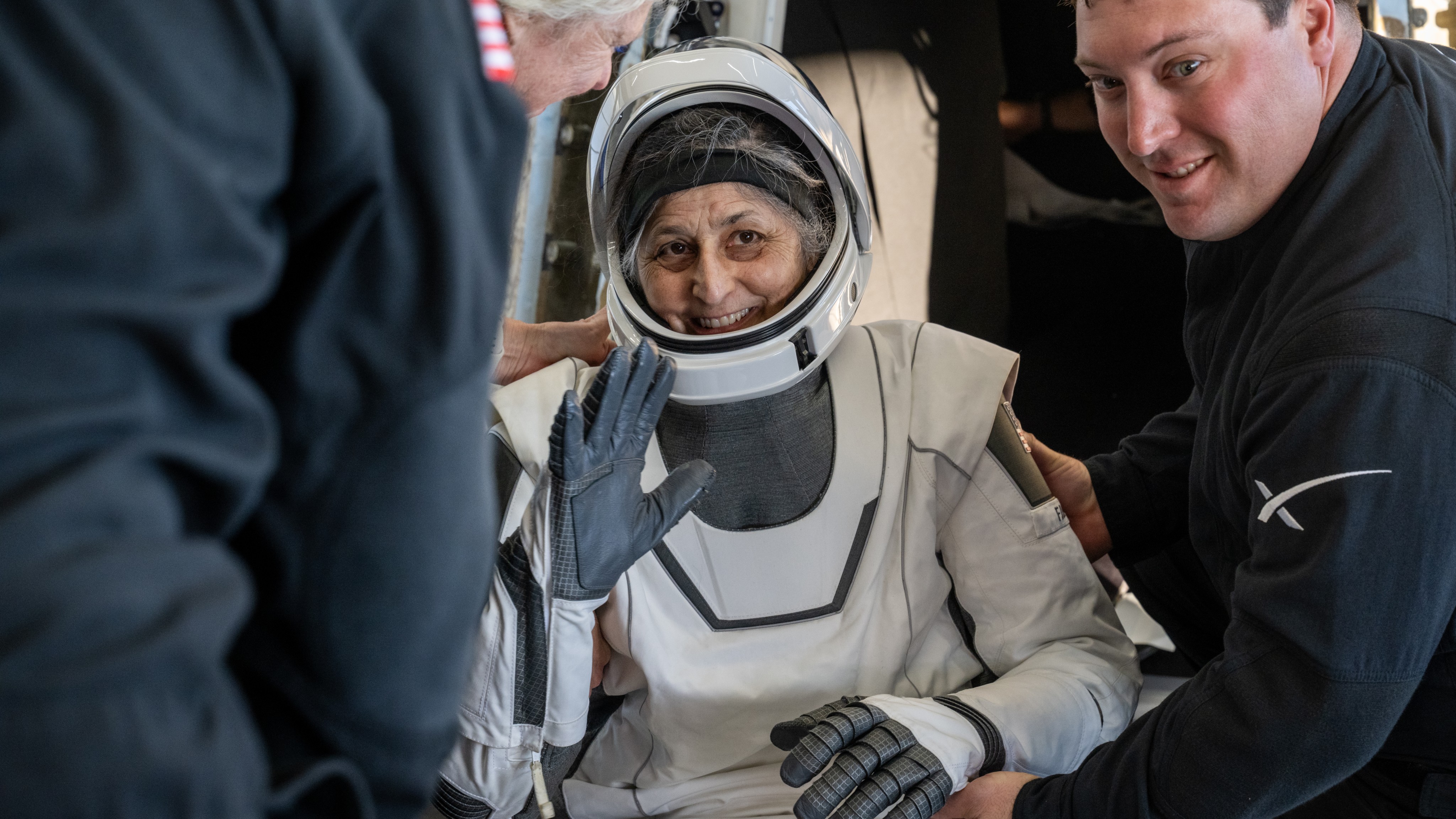
On March 18, 2025, NASA astronauts Butch Wilmore and Sunita Williams splashed down into the Gulf of Mexico aboard a SpaceX crew capsule, finally completing their unexpected nine-month mission to the International Space Station (ISS).
When the two astronauts rode an experimental Boeing Starliner spacecraft to the ISS on June 5, 2024, their stay in orbit was meant to last as few as eight days. But due to persistent leaks and errors aboard Starliner, the Boeing-made spacecraft was ultimately sent back to Earth without a crew — leaving Williams and Wilmore stuck on the ISS for more than nine months while a replacement capsule was arranged.
When the pair finally returned home in March, the astronauts had completed 286 consecutive days in space. But while that unexpectedly long duration sounds like a lot, it's totally normal for astronauts, and far from a new record.
Astronauts typically spend an average of six months aboard the ISS, where they conduct experiments and maintain the space station before returning to Earth, according to Live Science's sister site Space.com. However, missions can extend many months longer, for a variety of reasons, including long-duration experiments and unforeseen incidents.
Who has spent the longest time in space?
The record for the most consecutive days in space by an American goes to astronaut Frank Rubio, who spent 371 days aboard the ISS from September 2022 to September 2023.
Rubio was initially expected home in March 2023, but his stay in space more than doubled after a small meteoroid or piece of space junk slammed into the Russian Soyuz spacecraft that was meant to carry him home in December 2022, causing irreparable damage. Rubio, along with Russian cosmonauts Sergey Prokopyev and Dmitri Petelin, had to wait another six months in space before a replacement Soyuz capsule arrived to bring them home.
Related: How do tiny pieces of space junk cause incredible damage?
While Prokopyev and Petelin also clocked 371 consecutive days in space, they did not break any Russian records. Cosmonaut Valeri Polyakov — who holds the record for the most consecutive days spent in space by any human — worked aboard Russia's now-defunct Mir space station for 437 days, or more than 14 months, from January 1994 to March 1995. Polyakov volunteered for this mission as part of a study of the effects of long-term spaceflight on human health.
Other notable long-haul stays in space include American astronaut Christina Koch's 328 days aboard the ISS from March 2019 to February 2020 — the longest single spaceflight by a woman — and American astronaut Scott Kelly's 340 days in space from March 2015 to March 2016.
How does space affect the human body?

Kelly's extended spaceflight — which broke records at the time but has now been surpassed several times — was part of NASA's groundbreaking twins study, which compared Kelly's physical and mental health pre- and post-spaceflight to the baseline health of his identical twin brother Mark Kelly, a retired astronaut and current Arizona senator who remained on Earth during his brother's time in orbit.
The twin study revealed that astronauts experience a number of changes during long stays in orbit, including changes in gene expression, body weight and gut microbiome composition. It added to a still-growing body of research that shows that astronauts who spend extended amounts of time in microgravity are also likely to experience short-term health impacts such as muscle and bone loss, vision problems, lower immunity, an increased risk of blood clots and inflammation, and DNA damage. Most of these changes revert to normal after six months back on Earth, researchers have found. However, the study of spaceflight on human health is still in its infancy.
During their stay in orbit, Williams and Wilmore likely experienced some of these temporary changes, as well as changes in mental health associated with isolation and boredom, prior research suggests. But their extended stay in space was hardly unprecedented — and much safer than sending the pair home on a spacecraft with unresolved technical issues.
On its way to the ISS in June, Starliner sprung several helium leaks and showed issues with several of its smaller thrusters. The craft docked safely with the space station, but months of testing were unable to resolve the issues with certainty. On Aug. 24, NASA officials announced that, in the interest of safety, Starliner would undock from the ISS without a crew in early September, sending it back to Earth empty while Williams and Wilmore waited for their ride home in 2025. On Sept. 6, the empty Starliner successfully returned to Earth without issue.
Editor's note: This article was updated on Aug. 27 to correct an error stating that Starliner had a number of hydrogen leaks. They were in fact helium leaks. It was updated again on March 24, 2025, after the astronauts successfully returned home.







